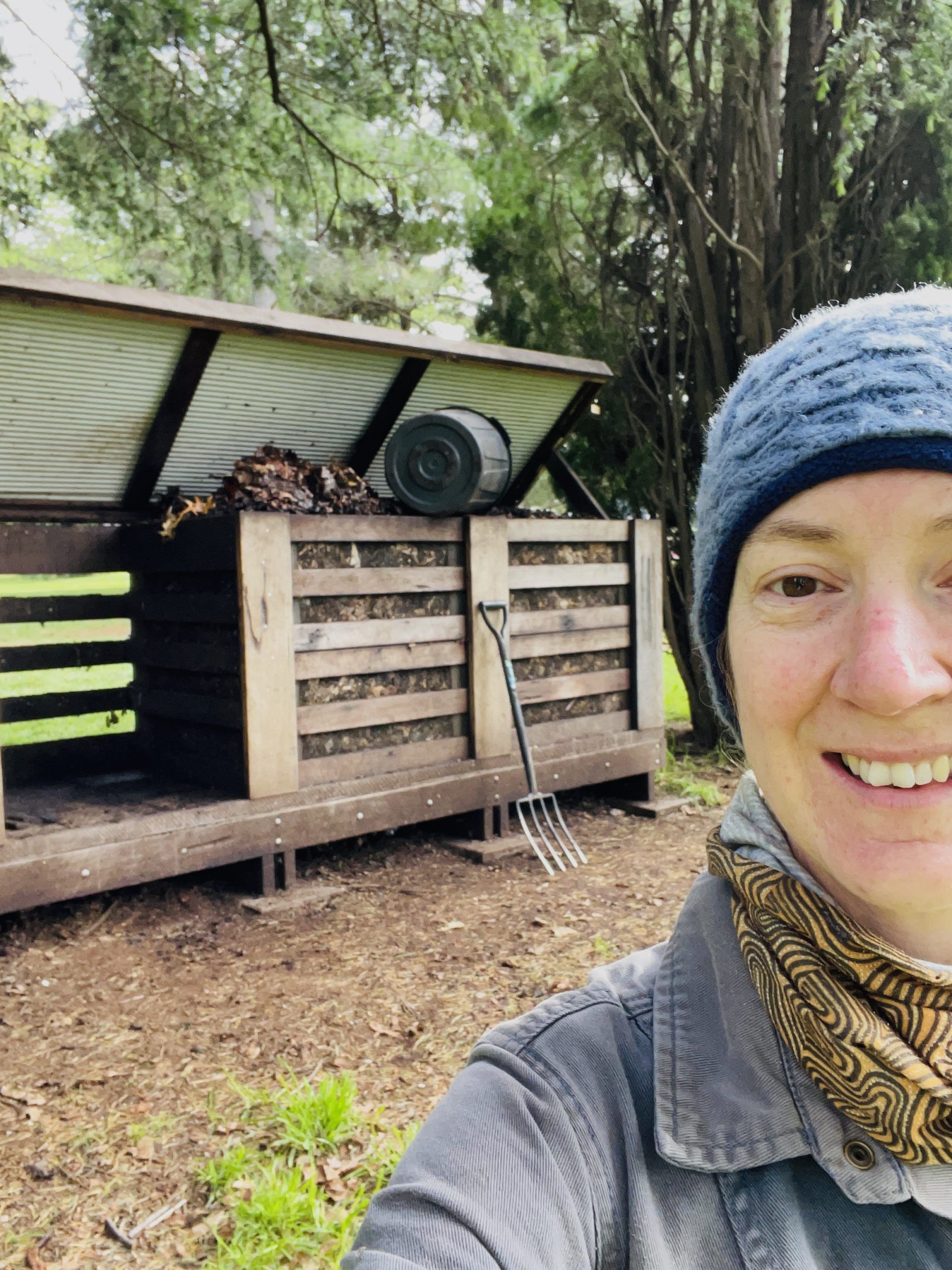
You’re contributing to superior composting
Ok. I’ll say it. We’re the better option. I don’t think I was brought up to toot my own horn, or maybe it’s an innate personality thing. But there are certainly times and places for that kind of thing. This is one of them.
I’ve talked before about some of the differences between backyard composting and larger scale operations, so called ‘commercial-scale’ or ‘industrial’ composting. I may have even said that our processes are ‘equivalent’ in that we can also process compostable plastics (made from polymers such as polylactic acid (PLA), polyhydroxyalkanoates (PHA) and more). But the truth is that these tricky new materials fare BETTER in our system than in the larger processing systems.
This blog post was inspired by a quick chat I had this morning with Emma, a regular contributor via our public drop-off. She had a compostable bag to contribute but mentioned that her friend had cautioned that they are ‘terrible things’.

I’ve written before about the use of compostable plastics as an alternative to our traditional plastics made from petrochemicals*. We don’t encourage the use of compostable bags to collect scraps. They’re simply not needed, and don’t even add all that much in terms of convenience (a handful of shredded paper in the bottom of your bucket or caddy makes much more sense). But compostable plastics have some very legitimate use cases right now. And maybe we can use different polymers, with different characteristics for a wider array of applications in the future?
But that would be getting ahead of ourselves. I have also talked about the need for more processing options for these kinds of items. What I didn’t have room to add was that we actually need to innovate for more efficient processing. And by ‘we’ I mean the composting industry. At Capital Scraps we’re already butting up against biological limits. A compostable mailing satchel takes mere weeks (less than a month!) to break down in our system. Larger processing operations will need a longer time. The difference is how often the compost is turned (and managing other parameters simultaneously of course).

The length of time that materials break down in any composting set up becomes important when you are aiming for an efficient system. And running an economically viable operation means that you need to have an eye on efficiency. Our efficiency is spectacular. It’s how we can afford to run a social enterprise, using manual labour, and still come out as cheaper than a Govt FOGO trial (eg. this one in QLd, even if in both cases infrastructure costs were included). But this is also why we ask that any compostable bags or mailing satchels are cut into strips first. It speeds their decomposition and also prevents lamination in the system. A large bag or mailing satchel, when flattened out presents a water barrier and breaks up the sponge character of our heap, where water and nutrients normally flow to where they’re needed as things dynamically change from hour to hour.
Efficiency also means that we deliver greatly improved environmental benefits. Our operation is less stinky, generates less methane and leads to more humification. This week I watched the ANU climate update and one of the speakers said that ‘nature based solutions for carbon sequestration are relatively short term’. She was referencing tree plantations that only store carbon for about 20 or maybe 30 years if you’re lucky. But she was forgetting (or not aware of) the absolute original game in carbon storage: humification (and similar reactions).

I specifically have been keeping my lips zipped about all of this for the last few years because I didn’t want to pooh pooh any other composting efforts. The truth is that we need all that we can possibly build and manage (except for those stinky backyard heaps where no extra carbon feedstock has been added – they should go).
So, thank you to Emma and her friend for being sceptical of the power of our modest looking heaps. Emma’s friend even said that our heaps ‘wouldn’t get hot enough to break down compostable plastics’. That couldn’t be further from the truth. Our heaps are actually at a lovely goldilocks level where they have maximum power but are also very manageable in size. It yields us impressive throughput. The humble appearance of our heaps hides something that is absolutely worth tooting about!
And we also have faith that the larger processors can catch up. It’s merely a question of economics. If more people are willing to finance composting infrastructure, whether through our fees or through rates and levies then we will be closer to getting this climate action no-brainer really happening. As always, remember to tell all of your friends (especially those in apartment blocks) about our climate saving efforts and encourage them to sign up and contribute.

Happy scrapping!
Dr Brook Clinton, Founder and Manager
*side note: whether plastics are made from petrochemical oil or from plants doesn’t matter. Don’t be fooled by Glad brand bags that say they’re made from plants. You can make both compostable and not-at-all-compostable plastics (polymers) from both plant sources as well as petrochemicals. It goes both ways in either case.
climate action, community composting, compost, compostable, composting, food waste, organics recycling, science
